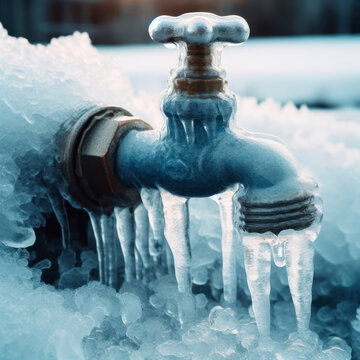How to Defend Your Pipes from Cold Weather: Professional Guidance
How to Defend Your Pipes from Cold Weather: Professional Guidance
Blog Article
Just about every person may have their own unique way of thinking about Winter Plumbing Precautions: Preventing Frozen Pipes.

Winter can damage your pipes, especially by freezing pipelines. Right here's just how to avoid it from taking place and what to do if it does.
Intro
As temperatures drop, the threat of icy pipes increases, potentially bring about costly fixings and water damage. Comprehending how to avoid icy pipes is vital for home owners in cold climates.
Prevention Tips
Insulating susceptible pipes
Wrap pipelines in insulation sleeves or utilize warmth tape to protect them from freezing temperatures. Concentrate on pipelines in unheated or external locations of the home.
Home heating techniques
Keep indoor areas appropriately heated up, specifically locations with plumbing. Open cabinet doors to permit warm air to flow around pipelines under sinks.
Just how to identify frozen pipelines
Seek reduced water flow from taps, unusual odors or noises from pipes, and visible frost on exposed pipes.
Long-Term Solutions
Architectural adjustments
Think about rerouting pipes far from exterior walls or unheated locations. Include additional insulation to attic rooms, cellars, and crawl spaces.
Upgrading insulation
Purchase top notch insulation for pipes, attics, and wall surfaces. Appropriate insulation helps keep consistent temperatures and reduces the risk of icy pipelines.
Protecting Outside Pipes
Garden tubes and exterior taps
Separate and drain pipes yard hose pipes before wintertime. Mount frost-proof spigots or cover outdoor faucets with insulated caps.
Comprehending Frozen Pipes
What causes pipes to ice up?
Pipes freeze when subjected to temperatures listed below 32 ° F (0 ° C) for expanded periods. As water inside the pipelines freezes, it increases, taxing the pipe wall surfaces and potentially causing them to burst.
Threats and damages
Frozen pipelines can result in water interruptions, building damage, and pricey repair services. Burst pipelines can flood homes and trigger considerable structural damage.
Indications of Frozen Pipeline
Identifying frozen pipes early can prevent them from rupturing.
What to Do If Your Pipes Freeze
Immediate activities to take
If you believe frozen pipes, maintain faucets open up to ease stress as the ice melts. Utilize a hairdryer or towels taken in warm water to thaw pipelines slowly.
Final thought
Protecting against frozen pipelines needs positive procedures and fast responses. By understanding the reasons, signs, and preventive measures, property owners can protect their pipes throughout cold weather.
6 Proven Ways to Prevent Frozen Pipes and Protect Your Home
Disconnect and Drain Garden Hoses
Before winter arrives, start by disconnecting your garden hoses and draining any remaining water. Close the shut-off valves that supply outdoor hose bibs and leave the outdoor faucet open to allow any residual water to drain. For extra protection, consider using faucet covers throughout the colder months. It’s also important to drain water from any sprinkler supply lines following the manufacturer’s directions.
Insulate Exposed Pipes
Insulating your pipes is an effective way to prevent freezing. Pipe insulation is readily available at home improvement stores and is relatively inexpensive. Pay close attention to pipes in unheated areas such as the attic, basement, crawl spaces, or garage. Apply foam insulation generously to create a buffer against the cold. You can also wrap your pipes in heat tape or thermostat-controlled heat cables for added warmth.
Seal Air Leaks
Inspect your home for any cracks or openings that could let in cold air. Seal any holes around the piping in interior or exterior walls, as well as the sill plates where your home rests on its foundation. Additionally, make sure to keep your garage door closed unless you’re entering or exiting. Leaving it open creates a significant air leak that can lead to frozen pipes.
Allow Warm Air Circulation
During cold snaps, it’s essential to allow warm air to circulate evenly throughout your home. Leave interior doors ajar to promote better airflow. Open kitchen and bathroom cabinets to help distribute heat consistently around the rooms. If you have small children or pets, be sure to remove any household chemicals or potentially harmful cleaners from open cabinets for safety.
Let Faucets Drip
A small trickle of water can make a big difference in preventing ice formation inside your pipes. When temperatures drop significantly, start a drip of water from all faucets served by exposed pipes. This continuous flow helps prevent the water from freezing. Additionally, running a few faucets slightly can relieve pressure inside the pipes, reducing the chances of a rupture if the water inside does freeze.
https://choateshvac.com/6-proven-ways-to-prevent-frozen-pipes-and-protect-your-home/

I'm just very inquisitive about How to Prevent Your Pipes From Freezing and I really hope you enjoyed reading our page. I beg you take a moment to promote this blog entry if you enjoyed reading it. Thank-you for your time invested reading it.
Book Your Appointment Report this page